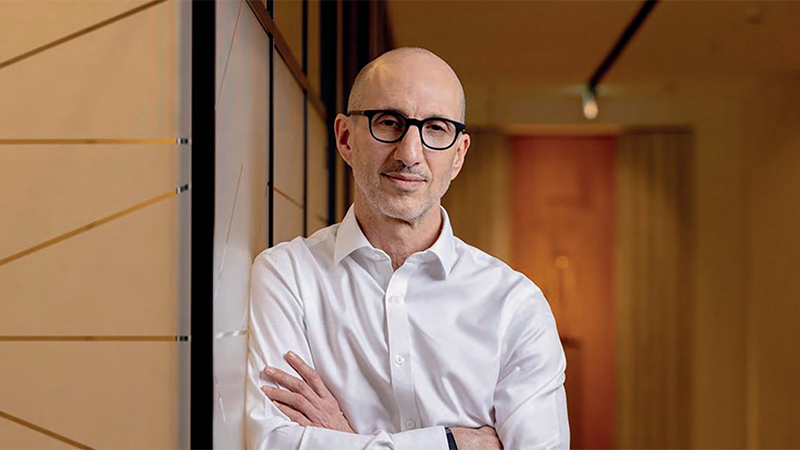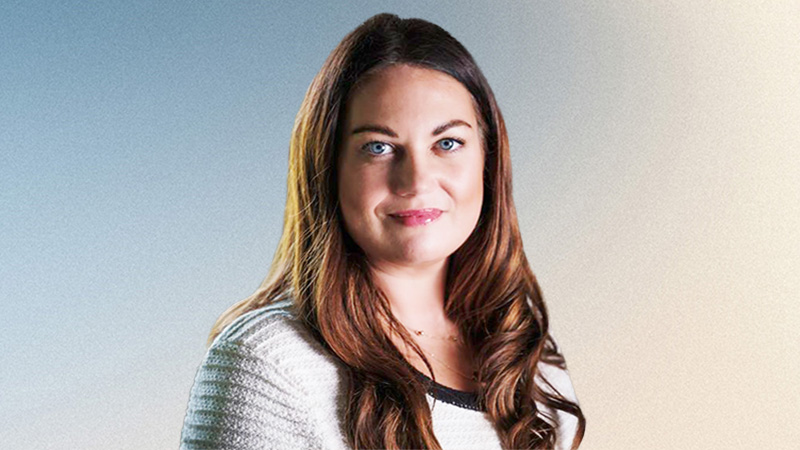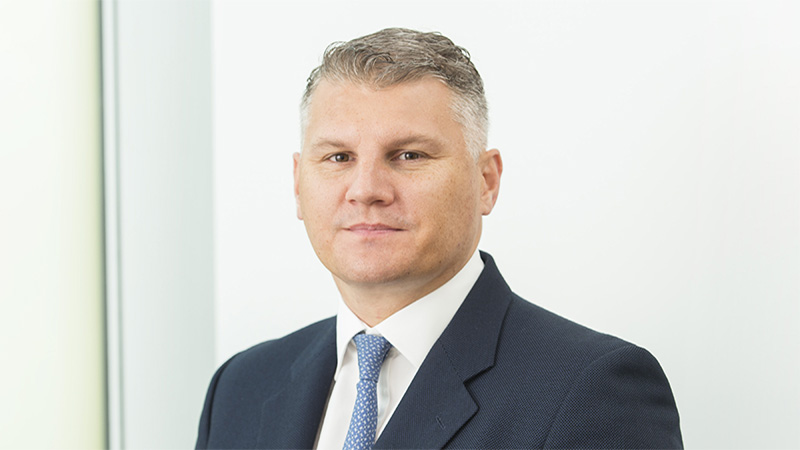“It sounds bit cliché, but nothing has changed and everything has changed,” says James Crossley, head of UK wholesale at Legal & General Asset Management, when looking back over the last 12 months. “The ambitions that I have for the business are broadly the same as last year but we have fulfilled some of them. You never fulfill all of them, but we have a plan. We are now the second-biggest retail group in the UK behind BlackRock. And generally, we are in the top five in terms of retail sales.”
The other goal he set the team last year was a renewed focus on diversity – not just in terms of the people themselves, but in terms of client and “genre of product”.
“This is always a work in progress but, invariably, we have done that,” he explains to Portfolio Adviser. “What I am most pleased about is that, when I joined five years ago, LGIM was predominantly known as an index house. We are still very proud of our index capabilities but that is not all that we do.
“My biggest challenge was to get the message out there to financial advisers, wealth managers and banks that we are good at index products, but that we have a lot of active capability. This can sometimes get overshadowed by the perception of us being an index house.”
An active fund in LGIM’s stable of products which Crossley is pushing at the moment is the £425m Legal & General Strategic Bond fund, which has been co-managed by Matthew Rees and Colin Reedle since 2019. Launched in 2007, the fund has comfortably achieved top-quartile returns relative to its average peer over three and five years, according to data from FE Fundinfo. Over the last half a decade, it has found itself in fourth place within the 71-strong IA Sterling Strategic Bond sector with a total return of 18%.
“We have changed our narrative on the fund to explain its unique selling points and travelled the country speaking to wealth managers and advisers,” Crossley says. “I think it is fair to say that, before we did this, a lot of people believed it was only for institutions. It took a lot of work to make people realise that it is a unit trust and a retail wholesale product.
“We just needed to speak about the product differently. We have sold £300m in units, in gross terms, year to date, which is a big number for a fund house that is not known for being active.”
Crossley says the fund’s “real edge” over its competitors is its duration management, which sets it apart from “many fantastic and competitive strategic bond funds out there”.
‘One size fits all’
Crossley admits the firm is “not selling lots of active equity” fund units at the moment but that, for now, he is focusing on building LGIM’s active reputation through the strategic bond mandate.
“What is interesting is that the fund is being bought more by advisers than wealth managers – advisory rather than discretionary. The market seems to see strategic bond funds as a ‘one size fits all’ global fund, and so wealth managers are opting to pick their own exposures to gilts, credit and high yield.
“Who wins? We will have to see. I have seen this phenomenon go through cycles where DFMs decide to allocate these decisions to the likes of us, and then to do it themselves. But at the moment, discretionary fund managers tend to be making their own calls.”
That being said, Crossley says the firm can also provide discretionary managers with “building blocks to make their own decisions” through its suite of indexed products.
He adds: “And, if investors don’t want to pick their own funds, we have our multi-asset franchise which is now ten years old and has almost £80bn of assets under management.”
Onuekwusi’s departure
In April this year, it was announced that Justin Onuekwusi, LGIM’s head of retail investments EMEA and head of retail multi-asset funds, would move to St James’s Place as CIO – a role which he commenced at the beginning of the month.
Having held a senior and integral role on the firm’s multi-asset team for more than a decade, Crossley says it was “sad to see him move on”.
“We will miss him – not just as a fund manager but as a person. Justin is a great man and he is a friend of mine. But the benefit of our multi-asset franchise is that it is very much a team-based approach.”
He points out that Emiel van den Heiligenberg continues to head up LGIM’s asset allocation, and that he has in excess of 30 professionals on his team comprising economists, strategists, fund managers, dealers and support staff.
“John Roe, who was Justin’s manager, is still head of multi-asset funds. Andrzej Pioch now technically speaking has his hands on the tiller, having worked alongside Justin on the funds for the last ten years.
“But again, it’s a team approach. Did anything go disastrously wrong when Justin left? No. Clients have also reacted very well, we haven’t seen any sudden redemptions and that is down to good communication.”
Evolution of index funds
With £470bn of index assets under management, and products held across more than 400 index portfolios, this side of the business inevitably remains a key focal point for Crossley.
While traditionally investors measure the success of an index-tracking fund via its charges and its tracking error, the head of UK wholesale says the industry has evolved to encompass much more in terms of what constitutes a successful product.
See also: “Invesco’s Aujla on US growth stocks, bright spots in small caps and why passive investing isn’t passive“
“There is more to offering index services than being a bog standard replication service now,” Crossley argues. “Investors look at your company profile, they look at the service you are providing, and they look beyond the basic products. A lot of people buy thematic indices from us – health and pharma have proven particularly popular over the last few years.”
He adds there are ways the team can protect investors against some downturns, and that the firm’s ESG overlay is a sought-after service.
“But, if you’re an index provider, you still have to do what the product says on the tin and you have to manage the price sensibly,” Crossley continues. “I would say this because we offer both, but the argument is no longer active versus passive. It should be active and passive.
“However, it is undeniable that post Retail Distribution Review, when the payment framework changed, indices have become more widely available and, given it has been a tough time for fund managers over recent years, indices have become more popular.”
He says the “next layer of the cake” is Consumer Duty regulation, which kicked in on 31 July this year, with the aim of setting a higher standard of consumer protection in financial services.
“When I talk to advisers they are scrutinising their prices more and more and, as they do that, they naturally consider the weighted cost of their investments overall.
“Sensible advisers that have lots of active funds are not throwing them out completely, they are just interchanging as and when the time is appropriate. If an adviser can get a good outcome from using actives and passives that’s brilliant. But the trend for index-linked products is undeniable and it is more than replicating a benchmark.
“But as an industry, we need to stop making it sound like a choice, and see it as more of a basket.”
Consumer Duty
When asked how the roll-out of Consumer Duty impacted LGIM as a firm, Crossley explains that while it required “a lot of hands to the pump”, much of what the Financial Conduct Authority required from firms was “already in place, in one way or another”.
“We were codifying what we were doing already with Assessment of Value [reports], we’ve had PROD [the launch of the FCA’s Product Intervention and Product Governance Sourcebook in 2018] and Dear CEO letters [notes issued by the FCA and Prudential Regulation Authority addressed to company executives], so products have to be tested.
“But, the way in which you articulate your messaging to clients needs to be translated for the end investor. You have to be careful about how you tell investors what the fund is and what it is doing. But again, you should be doing that anyway. So, it has been a case of sharpening the pencil in terms of how we do things.”
He adds: “Don’t get me wrong, Consumer Duty is important and I am not saying it wasn’t necessary, but a lot of the infrastructure was already in place as a large established UK business. We were very comfortable with the idea. Big isn’t always beautiful, but it has benefits.”
Open-ended property
Given LGIM houses the £1.4bn open-ended L&G UK Property fund, managed by Michael Barrie and Matt Jarvis, it would have been remiss of Portfolio Adviser not to ask about M&G and Canada Life’s recent decisions to shutter their PAIFs due to liquidity concerns. Will LGIM follow suit?
Crossley was unable to say too much on the matter, but explains: “As of today, nothing is changing. The PAIF is open. It has cash on the balance sheet. We speak to all our investors regularly. They’re happy.”
Providing the official company comment, co-manager and director of fund management for LGIM’s real assets Barrie states: “The L&G UK Property fund (PAIF) and its feeder fund, the Legal & General UK Property (Feeder) remain open to investors. Fund size and liquidity remain stable with cash and REITs in the fund(s) at 14.2% as of 31 August 2023.
“L&G has been a property sector leader for over 16 years and is well positioned to provide balanced property exposure to investors. We remain committed to providing investors access to the sector, as well as LGIM’s award-winning property fund management expertise, via robust products that are fit for purpose and within the remits of the regulatory landscape.
“With assets under management of over £1.4bn, the L&G PAIF is the largest in the sector and one of the best performers over three and five year periods respectively.”
He adds: “Relative to other asset classes, we believe that the UK property sector remains an attractive diversifier in any balanced portfolio, and is well positioned for investors with long-term horizons. The L&G UK Property fund continues to offer investors access to this real and alternative asset class, and remains well placed for any structural changes to the UK property market.”
Biggest challenges
Look over the short-to-medium term, Crossley admits the asset management industry faces several challenges.
“If people can earn 6% in a fixed rate cash product for a year, then I understand why they are likely questioning whether they want to spend the annual charge to put their money into risk assets. But I do think we need to educate consumers that inflation is still higher than cash,” he says. “If you miss the best days in markets you lose a lot of potential returns, and I find whether you’re an intermediary or an individual investor, it is easy to say when to come out, but very hard to say when to come back.
“Sitting in cash is a temporary phenomenon. But if I were to make a prediction, and I’m not an investment manager, I think as the cash positions roll off over the next 12 months, some of the best opportunities will be in fixed income. Investors will sell down their holdings in money market funds and move into the asset class.
“But, given it’s going to be tough for at least the next six months or so, I expect people to buy into multi-asset, too.”










